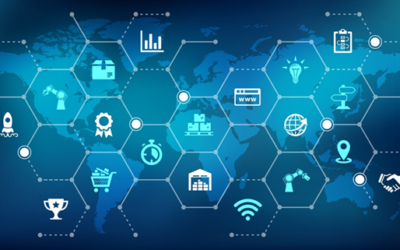Triage and Technology: 5G Connectivity for Real-Time Collaboration in The Most Stressful Times
25
January 2022
Pente Networks Marketing
Throughout the emergency service sector, the necessity for rapid, effective, and data-driven responses has been an essential prerequisite in day-to-day operations, with emergency helplines even further inundated due to the Coronavirus pandemic.
As a result, the prevalence of innovative and cutting-edge 5G technology has increased, improving the outcomes of vital life-or-death situations across fire and rescue, law enforcement, and emergency medical services.
Recently, Gartner reported the pandemic had fueled the rise of 5G network infrastructure worldwide by 39% in 2021. This expanse of 5G networking strengthens the reliability of critical communication systems through a plethora of benefits, including edge computing, adaptive smart sensors, and greatly reduced latency that can hasten the transfer of data and overhaul inconsistent traditional systems.
Many 5G networks are also supported by Citizens Band Radio Service (CBRS), made of 150 MHZ of the 3.5 GHz band that reaches 3.7 GHz. It is a cellular solution that functions between unlicensed and licensed connectivity solutions. Utilizing the available CBRS spectrum to reduce the degradation of signals for 5G monitoring technology and ensuring networks retain a stable connection throughout a crisis allows operators to effectively respond to an influx of emergencies from any location appropriately.
“Enterprise 5G provides communities with an ability to securely, predictably, and efficiently connect the first responders with ER doctors and nurses even as those who require immediate care are being seen at home, then driven to the hospital by ambulance,” said Roy Timor Rousso, CRO, JpU, an enterprise 5G network service provider. “Only with the low latency and reliability of 5G can communities stay connected – whether directly or through a dispatch system that orchestrates collaboration on mobile devices and connected vehicles.”
Additionally, CBRS can be employed through 5G mobile devices and wearable cameras being developed for the field that can be used in various scenarios to transmit and receive data from first responders. This enables them to thoroughly analyze available data in response to the developing situation instead of interpreting and making decisions with limited intelligence.
“Communicating this essential information and providing enhanced navigational systems can become critical to saving the lives of the victims and the respondents,” Roy Timor Rousso said. “Both are often in life-threatening events such as fires, the ability to receive real-time instructions and knowledge through medical records and structural information is critical.”
In addition to his work with JpU, Timor-Rousso is a Col. in an elite mobile infantry unit in the Israel Defense Forces (IDF), the sole military wing of the Israeli security forces. “Some of the prime applications being developed are using 4G/5G enabled platforms in the field, adopting innovations including the ability to have a remote doctor guide a medic, helping them help the wounded using an HD camera, high-quality audio, and augmented reality. Another scenario is the ability to have a soldier in the field tap into an expert or engineer when they need to dismantle a piece of machinery in a certain way, or otherwise respond to an incident.”
Boasting exceptional low latency and increased data transfer speeds, 5G networks reportedly can support over 1 million connected devices per square kilometer whilst requiring greatly reduced wiring and other physical infrastructure.
With the continuing investment into 5G networks, it is increasingly likely that other innovative devices will be used by these networks in enhancing the already powerful security systems it enables for citizens and respondents who consistently offer their lives.
Originally published on HealthTech Zone
Similar Blogs
Human Factors & Trust Fabrics: Building Confidence & Resilience Across Connected Systems
As investment in industrial innovation grows, and with the U.S. economic recovery strategy coming into focus – with trillions of dollars set to be distributed to improve cities and towns across America – the importance of blending the physical and digital worlds to improve outcomes, control costs, and create sustainable improvements across the environment, education, employment, services, transportation, public safety, and cybersecurity has never been greater.
A New Starship Enterprise: Building Federated Networks for Distributed IoT and IIoT Solutions
The “Starship Enterprise” is the nickname of fictional spacecraft, some of which were the main craft and setting for various television series and films in the Star Trek science fiction mega franchise. The most notable were Captain James T. Kirk’s USS Enterprise (NCC-1701) from the original 1960s television series, and Captain Jean-Luc Picard’s USS Enterprise (NCC-1701-D) from Star Trek: The Next Generation.
As More IoT Devices Connect Through Cellular Networks, Two Companies Join Forces to Simplify and Secure Connectivity
IoT is hard, and distributed IoT implementations that are increasingly connected on cellular networks can be complex and riskier – and more expensive – than end buyers of full-stack IoT solutions may think.


